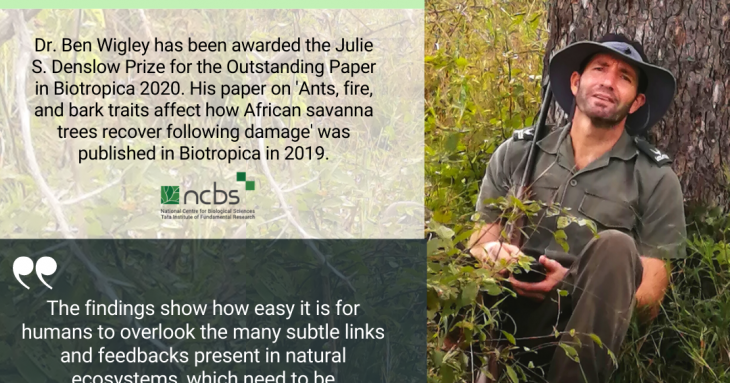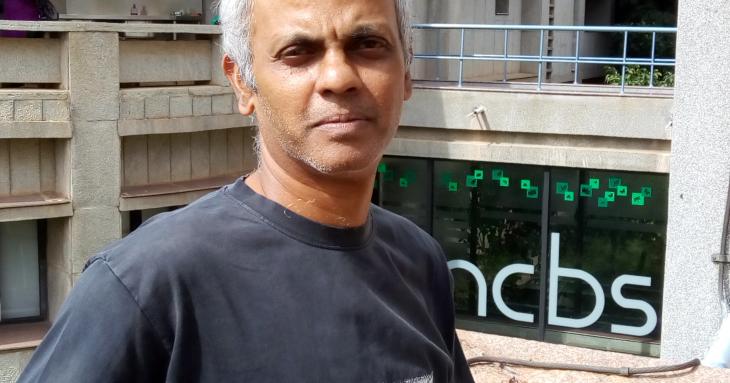-
Congratulations! Dr. Ben Wigley awarded Julie S. Denslow Prize for the Outstanding Paper in Biotropica 2020
Dr. Ben Wigley has been awarded the Julie S. Denslow Prize for the Outstanding Paper in Biotropica 2020. His paper on 'Ants, fire, and bark traits affect how African savanna trees recover following damage' was published in Biotropica in 2019.
-
Aarey, smog, wildfires — forests dominate headlines. But what exactly is a forest?
What exactly is a forest? India’s green cover is not easy to understand. There are different types of greenery, lands where trees shouldn’t crop up even if they can, and the definition of forests, savannas, and other green ecosystems vary across the country.
-
Mahesh Sankaran for this year's Harper Review
Harper Reviews celebrate the eminent ecologist John Harper, and the journal invites one accomplished mid-career ecologist from across the globe each year to submit a review on an issue of wide importance. This year's Harper Review chronicles the droughts and ecological future of the Savannah g
-
India’s understanding of forest fires has been skewed by colonial-era policy
Jayashree Ratnam, associate director of the wildlife biology and conservation programme at the National Centre for Biological Science, said that these forests are mesic savannas. “Having worked for a while in African savannas and being very familiar with the idea that mixed tree-grass ecosystems were distinctive from forests, when we returned to India and started visiting various field sites, we were struck by the similarities of these sites with African savannas,” she said.
-
The identity crisis of the Indian savannas
In a study, published in the journal Frontiers in Ecology and Evolution, researchers from the National Centre for Biological Sciences, Bengaluru, have shown that grass-fuelled fires and seasonal drought, which are the characteristics of savannas, are also observed in the dry deciduous “forests” in India. These findings add to a growing body of evidence that these systems are, in fact, savannas.






